
The Donegal fiddle tradition is one of the distinct fiddle traditions within Irish traditional music. The distinctness of the Donegal tradition developed due to the close relations between County Donegal and Scotland, and the Donegal repertoire and style has influences from Scottish fiddle music. For example, in addition to the ”universally known” standard Irish dance tunes, there is an added volume of Scottish and Nova Scotia tunes played, with even some tunes from Shetland and Orkney. This includes standard tune types such as double jigs, slip jigs, reels, and hornpipes. It has been claimed that Donegal musicians play more slip jigs than any other region of Ireland. This is potentially due to the geographical borders/mountains keeping Donegal's repertoire more locally-known for decades. There is also a prevalence of mazurka playing. Mazurkas are historically mainland-European tunes very similar to a waltz, in its 3
4 meter, though generally livelier and with more emphasis being placed on the second beat of each measure. Another uniquely Donegal tune is called the barndance, stemming from the Germanic schottische, also similar to the Norwegian reinlander. The barndance is very similar to a hornpipe, but slower than a reel; typically they are played with less of a hornpipe's “swing” and more of the “drive” of a reel.

A fiddle is a bowed string musical instrument, most often a violin. It is a colloquial term for the violin, used by players in all genres, including classical music. Although in many cases violins and fiddles are essentially synonymous, the style of the music played may determine specific construction differences between fiddles and classical violins. For example, fiddles may optionally be set up with a bridge with a flatter arch to reduce the range of bow-arm motion needed for techniques such as the double shuffle, a form of bariolage involving rapid alternation between pairs of adjacent strings. To produce a "brighter" tone than the deep tones of gut or synthetic core strings, fiddlers often use steel strings. The fiddle is part of many traditional (folk) styles, which are typically aural traditions—taught "by ear" rather than via written music.
Fiddler's Green is an after-life where there is perpetual mirth, a fiddle that never stops playing, and dancers who never tire. In 19th-century English maritime folklore, it was a kind of after-life for sailors who had served at least fifty years at sea.
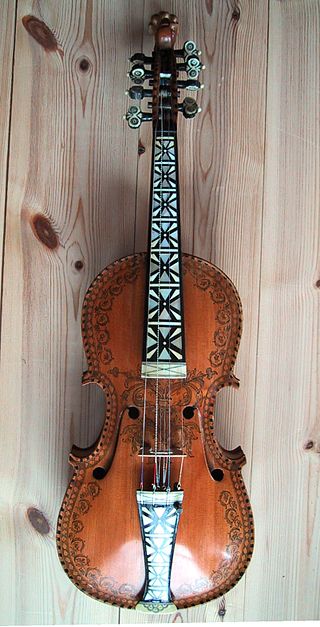
A Hardanger fiddle is a traditional stringed instrument considered to be the national instrument of Norway. In modern designs, this type of fiddle is very similar to the violin, though with eight or nine strings and thinner wood. The earliest known example of the hardingfele is from 1651, made by Ole Jonsen Jaastad in Hardanger, Norway. Originally, the instrument had a rounder, narrower body. Around the year 1850, the modern layout with a body much like the violin became the norm.

Old-time music is a genre of North American folk music. It developed along with various North American folk dances, such as square dancing, contra dance, clogging, and buck dancing. It is played on acoustic instruments, generally centering on a combination of fiddle and plucked string instruments, most often the banjo, guitar, and mandolin. Together, they form an ensemble called the string band, which along with the simple banjo-fiddle duet have historically been the most common configurations to play old-time music. The genre is considered a precursor to modern country music.

"Turkey in the Straw" is an American folk song that first gained popularity in the 19th century. Early versions of the song were titled "Zip Coon", which were first published around 1834 and performed in minstrel shows, with different people claiming authorship of the song. The melody of "Zip Coon" later became known as "Turkey in the Straw"; a song titled "Turkey in de Straw" with different music and lyrics was published in 1861 together with the wordless music of "Zip Coon" added at the end, and the title "Turkey in the Straw" then became linked to the tune of "Zip Coon".
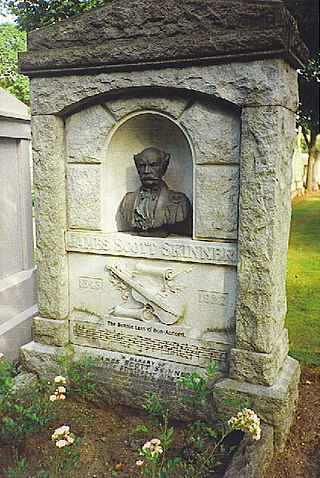
James Scott Skinner was a Scottish dancing master, violinist, fiddler and composer. He is considered to be one of the most influential fiddlers in Scottish traditional music, and was known as "the Strathspey King".

"Ashokan Farewell" is a musical piece composed by the American folk musician Jay Ungar in 1982. For many years, it served as a goodnight or farewell waltz at the annual Ashokan Fiddle & Dance Camps, run by Ungar and his wife Molly Mason, who named the tune after the Ashokan Field Campus of SUNY New Paltz in Upstate New York.
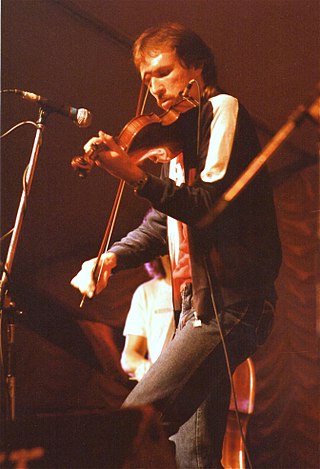
Mark O'Connor is an American fiddle player, composer, guitarist, and mandolinist whose music combines bluegrass, country, jazz and classical. A three-time Grammy Award winner, he has won six Country Music Association Musician Of The Year awards and was a member of three influential musical ensembles: the David Grisman Quintet, The Dregs, and Strength in Numbers.

Cape Breton fiddling is a regional violin style which falls within the Celtic music idiom. The more predominant style in Cape Breton Island's fiddle music was brought to North America by Scottish immigrants during the Highland Clearances. These Scottish immigrants were primarily from Gaelic-speaking regions in the Scottish Highlands and the Outer Hebrides. Although fiddling has changed considerably since this time in Scotland, it is widely held that the tradition of Scottish fiddle music has been better preserved in Cape Breton. While there is a similar tradition from the Irish-style fiddling, that style is largely overlooked as a result of the strong Scottish presence in the area.

"The Devil Went Down to Georgia" is a song written and recorded by American music group Charlie Daniels Band and released on their 1979 album Million Mile Reflections.
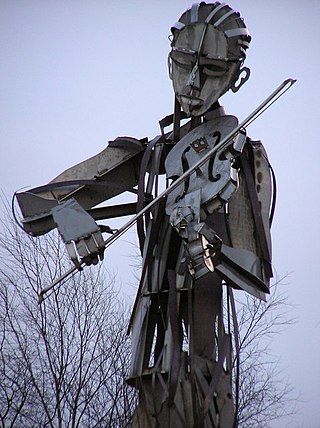
The fiddle is one of the most important instruments in the traditional repertoire of Irish traditional music. The fiddle itself is identical to the violin, however it is played differently in widely varying regional styles. In the era of sound recording some regional styles have been transmitted more widely while others have become more uncommon.

Ann Marie Calhoun is an American classically trained violinist who has performed as a bluegrass and rock musician in a number of prominent acts, including Jethro Tull, Steve Vai, Widespread Panic, Dave Matthews Band, Ringo Starr, A.R. Rahman and Mick Jagger's SuperHeavy. She has closely collaborated with Hans Zimmer on numerous film scores, including Sherlock Holmes, Interstellar, 12 Years a Slave, The Lone Ranger, The Little Prince, Man of Steel, and Captain Phillips. She is the sister of violinist Mary Simpson.

American fiddle-playing began with the early European settlers, who found that the small viol family of instruments were more portable and rugged than other instruments of the period. According to Ron Yule, "John Utie, a 1620 immigrant, settled in the North and is credited as being the first known fiddler on American soil". Early influences were Irish, Scottish, and English fiddle styles, as well as the more upper-class traditions of classical violin playing. Popular tunes included "Soldier's Joy", for which Robert Burns wrote lyrics, and other tunes such as "Flowers of Edinburgh" and "Tamlin," which have both been claimed by both Scottish and Irish lineages.

Old timefiddle is the style of American fiddling found in old-time music. Old time fiddle tunes are derived from European folk dance forms such as the jig, reel, breakdown, schottische, waltz, two-step, and polka. When the fiddle is accompanied by banjo, guitar, mandolin, or other string instruments, the configuration is called a string band. The types of tunes found in old-time fiddling are called "fiddle tunes", even when played by instruments other than a fiddle.

Canadian fiddle is the aggregate body of tunes, styles and musicians engaging the traditional folk music of Canada on the fiddle. It is an integral extension of the Anglo-Celtic and Québécois French folk music tradition but has distinct features found only in the Western hemisphere.
Métis fiddle is the style that the Métis of Canada and Métis in the northern United States have developed to play the violin, solo and in folk ensembles. It is marked by the percussive use of the bow and percussive accompaniment. The Métis people are a poly-ethnic post-contact Indigenous peoples. Fiddles were "introduced in this area by Scottish and French-Canadian fur traders in the early 1800s", where the Metis community adopted the instrument into their culture.
Quebec fiddle is a part of the Old time fiddle canon and is influential in New England and Northwest fiddle styles.
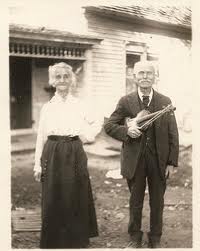
Jasper E. "Jep" Bisbee was an American old-time musician. Bisbee was one of the few oldtime musicians, who recorded for Edison Records recordings and one of the first rural musicians who ever produced a record.
















